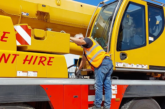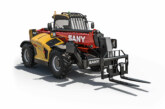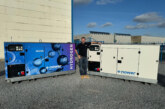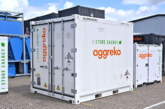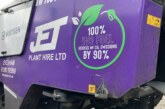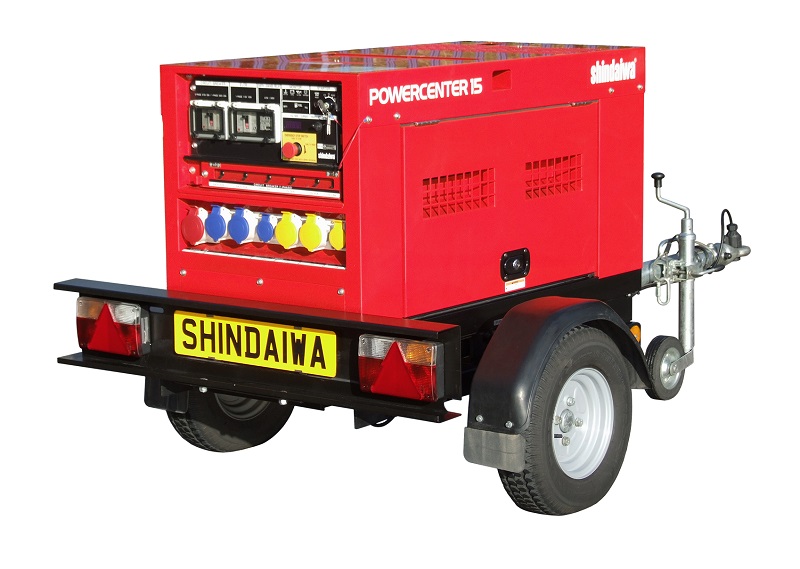
Fuel consumption, carbon footprint, security and noise – each perennial issues that contractors will need to consider when specifying generators and compressors. Construction Plant News investigates some of the latest solutions in these crucial areas
Hybrid power is a growing market for hirers but how can rental companies and end users benefit from the technology?
The most obvious value of choosing a hybrid generator is a reduction in run times and the associated fuel costs.
These in turn have the additional advantage of lowering a contractor’s carbon footprint. In an age when construction companies are increasingly required to demonstrate their sustainability credentials at the tender stage this is in itself could prove to be a significant business benefit.
So how do they work? Hybrid power generators are in principle the same as hybrid power cars, allowing end users to alternate between diesel and battery power.
 They can be powered from renewable sources, such as solar PV cells, or through an AC connector to a diesel generator.
They can be powered from renewable sources, such as solar PV cells, or through an AC connector to a diesel generator.
HPGs feature an integrated intelligent switching system that allows them to automatically start and stop any diesel generator with an Aux connection.
Provided the diesel generator is not using 75 – 80% of its load it will be trickle charging the battery unit for periods of low load.
In addition to fuel savings reduction of CO2 and NOx emissions are a key consideration for main contractors, with around half of all the UK’s carbon emissions accounted for by the construction and related industries.
Temporary power is an important contribution, particularly where there is a requirement for 24-hour power.
The good news is that, according to Firefly, the combination of a hybrid power system, such as the new Cygnus® HPG Three, alongside diesel generators between 20 – 125 kVA provides a smart power solution.
In addition to AGM battery technology, the Cygnus HPG Three is now available with Lithium. With more energy storage than ever before of up to 61 kWh, the Lithium option is matched by an 10-year battery life expectancy to 80% depth of discharge.
Using AGM battery technology, the unit features up to 21 kVA 230/400 V continuous output, 63 kVA peak output and up to 50 kWh usable energy storage.
With lithium, the Cygnus Three again features up to 21 kVA 230/400 V continuous output and 63 kVA peak output but up to 61 kWh usable energy storage.
To ensure the most appropriate solution is selected, the manufacturer will provide site planning advice, as well as full site support from the company’s team of Field Service Engineers, who are on hand 24/7.
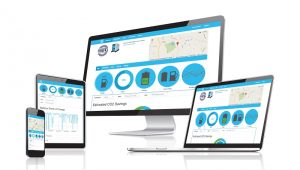
There is also the option of utilising GLOW RFM software, a cloud platform that provides reporting and management functionality to achieve energy and fuel savings. Contractors can then analyse performance data to fine tune their operations.
The GLOW RFM software is itself a hybrid first and coupled with the Cygnus Three, the offering is an innovative way for contractors to not only choose a more sustainable option for their site, but also track its efficiency to achieve the best possible results.
Andy Mead of Firefly commented, “The Cygnus Three serves as a technology showcase for lithium energy storage, taking safety and build quality to the next level.
With silent overnight power, the solution helps contractors to meet the requirements under the Considerate Constructor Scheme along with helping to fulfil both Contractors and the UK’s emissions 2020 target.”
Generators Containers
In busy city centre locations in particular security is also a concern, which is why a suitable generator container should be specified.
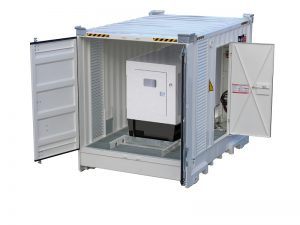 Moreover, generators that are being used in remote locations are equally vulnerable to theft and vandalism. A robust container provides peace of mind for operators that power will be maintained on site, and that’s exactly what Western Global’s TransTank Gen Series Container provides.
Moreover, generators that are being used in remote locations are equally vulnerable to theft and vandalism. A robust container provides peace of mind for operators that power will be maintained on site, and that’s exactly what Western Global’s TransTank Gen Series Container provides.
This heavy duty unit is designed to house a generator up to100 kva, whilst the base of the container features a bunded 2,000 litre fuel tank, enabling extended generator run times, which allows for longer run times at peak load power.
The Gen Series has lockable double end doors for generator installation and side entry access. All of these security measures will, of course, deter fuel theft as well as the potential for malicious damage.
Shindaiwa Generators and Compressors
Shindaiwa is a relatively new name in the generators business having first introduced its generators and compressors range to the UK market six years ago.
 Providing the contract hire and construction industry with a range of solutions, the company can now boast major rental companies like Hewden, with almost 300 Shindaiwa generators in its fleet, amongst its customer base.
Providing the contract hire and construction industry with a range of solutions, the company can now boast major rental companies like Hewden, with almost 300 Shindaiwa generators in its fleet, amongst its customer base.
A defective generator or compressor is costly in terms of downtime, so having a partner that can minimise disruption is a key component of any deal, which is why the Japanese company prides itself on its follow-up service offer.
Amongst the product themselves the manufacturer describes its Powercenter range, which features the 15, 20 and 37, as ideal for the construction sector.
The compact design of the Powercenter 15 comes fully bunded, with three voltage options ranging from 110V to 415V. It’s super silent to operate and has a running time of up to 12 hours.
In contrast the Powercenter 20 and 37 generators also come fully bunded but offer a three way fuel valve and up to 85 hours continuous running time. They are also very quiet to operate with just 62db(A) at a distance of 7m.
In addition to the generators, Shindaiwa’s trailer mounted Airman compressors are also proving popular. The PDS130 and PDS185 have a rotary twin screw and are oil cooled.
They offer noise levels of just 68db(A) at 7m and free air delivery up to 185cfm and working pressure of 100psig.


